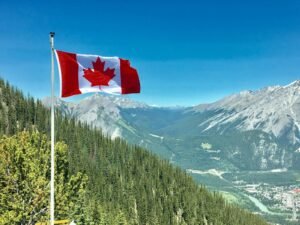
Beyond the Stereotypes: North and Northeast of Brazil
North and Northeast: Economic Powers of Brazil
Going Beyond the Stereotypes: The North and Northeast of Brazil
For many, the North and Northeast of Brazil are often thought of as being the same, but is that really the case? There is a common misconception that the Amazon region is only about forests, indigenous communities, and almost no development. While the forest is undeniably important, this view neglects the urban centers, industries, and growing economies of these areas.
Challenging Misconceptions: The Amazon Region
When we think of the Amazon, it’s easy to imagine only vast forests and indigenous communities. But the Amazon also includes dynamic cities like Manaus, which thrive due to the Free Trade Zone. This region is diversifying its economy beyond natural resource extraction, with growing sectors like technology, sustainable tourism, and agriculture.
According to IBGE, in 2022, the North region (comprising Acre, Amapá, Amazonas, Pará, Rondônia, Roraima, and Tocantins) had a population of about 17 million people. This highlights how the region is more than just its natural landscapes—it’s a hub for economic growth and innovation.
Belém: A Culinary and Cultural Hub
Belém stands out as the Amazon’s cultural and culinary center. The city is the only one in the region to receive UNESCO’s Creative City of Gastronomy designation. Belém’s cuisine blends indigenous, African, and Portuguese influences, creating a rich, unique culinary tradition. The city attracts chefs and food professionals from all over Brazil and the world, fascinated by its distinctive flavors, like açaí, tacacá, tucupi, jambu, and maniçoba.
This recognition also highlights that the Amazon region has much more to offer than just its forests. Belém is preparing for a major event, COP30, in 2025, with the city undergoing large-scale infrastructure upgrades to accommodate the global event.
The Northeast: Much More Than Drought and Poverty
Comprising Alagoas, Bahia, Ceará, Maranhão, Paraíba, Pernambuco, Piauí, Rio Grande do Norte, and Sergipe, the Northeast is often stereotyped as a region suffering from extreme poverty and drought. However, this image doesn’t tell the full story. Large cities like Salvador, Recife, and Fortaleza are important urban centers with well-developed infrastructure, thriving industries, and rich cultural traditions.
Economic Growth in the Northeast
The Northeast is also a major agricultural hub, contributing significantly to Brazil’s economy. Fortaleza, for example, has the highest GDP in the region. In 2021, Fortaleza ranked 8th among Brazilian capitals in terms of GDP contribution. The growth of business events in the city reflects the region’s increasing importance in Brazil’s economy.
The Northeast’s agricultural and industrial sectors are booming, and cities like Recife and Salvador are central to this development. These regions are more than just symbols of poverty; they are home to expanding economies and growing industries.
Conclusion: Valuing the Diversity of Brazil’s North and Northeast
Both the North and Northeast of Brazil are complex regions with vibrant economies, diverse cultures, and rich histories. Challenging stereotypes is crucial for understanding the full scope of what these areas have to offer. By recognizing the economic and cultural importance of these regions, we can foster a more accurate and fair perspective on Brazil’s diverse landscape.
Read also: Brazil: Much More Than the Country of Soccer.








2 thoughts on “Beyond the Stereotypes: North and Northeast of Brazil”